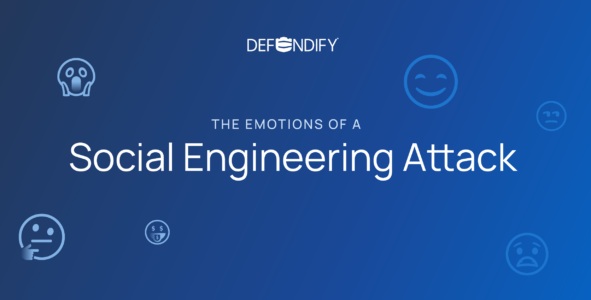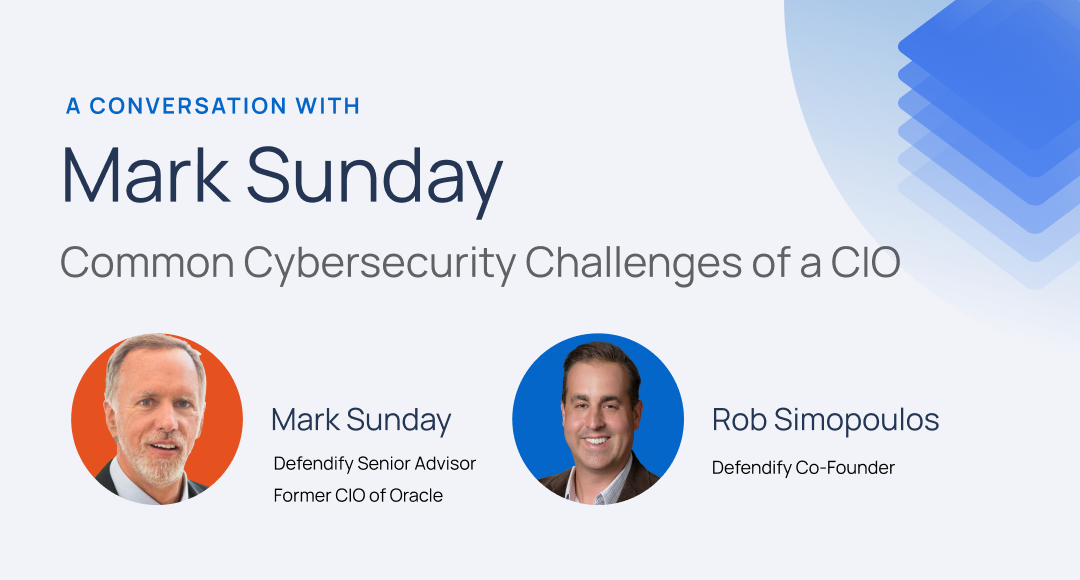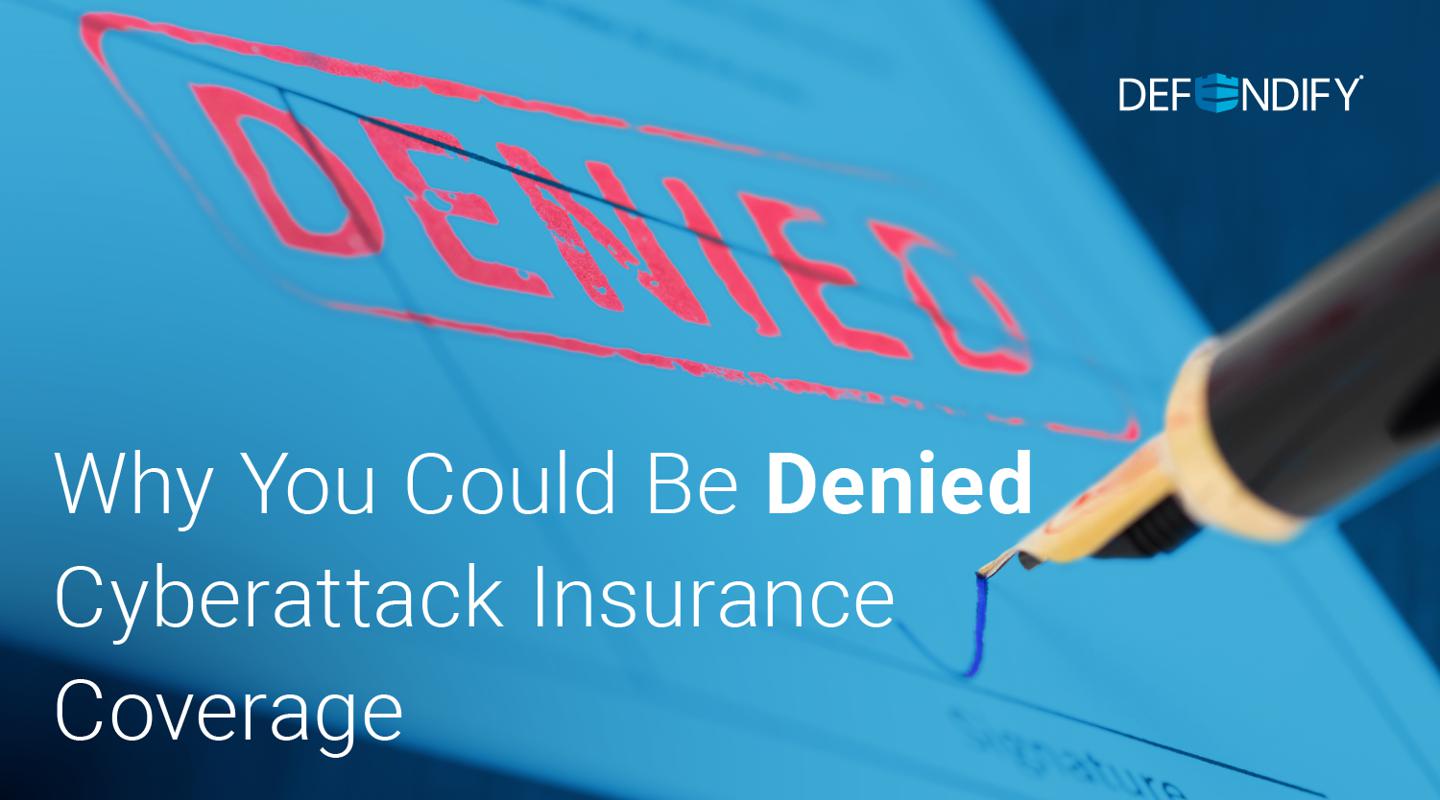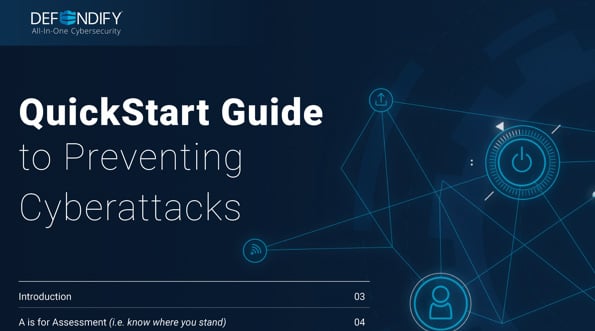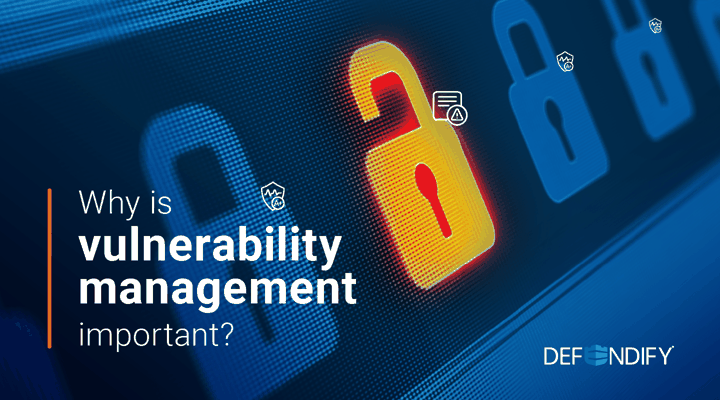Cyberattacks are on the rise, targeting weaknesses in your systems to breach data, disrupt business operations, and damage your reputation. That’s why vulnerability management is no longer optional – it’s a critical component of any comprehensive cybersecurity strategy.
Vulnerability management is the process of identifying, evaluating, and remediating weaknesses in your IT infrastructure, including your workstations, servers, software, and network devices. Ignoring these vulnerabilities is like leaving your front door wide open to cybercriminals, especially ransomware attackers.
And the threat is constantly evolving.
Zero-day vulnerabilities, flaws unknown to security professionals, are exploited before patches become available. This makes proactive vulnerability management essential for protecting your business.
In this guide, we’ll explain why vulnerability management is so important and explore the tools and strategies you can use to implement to safeguard your business.
Why You Need Vulnerability Management
Vulnerability management uncovers deeper, company-wide security vulnerabilities that can wreak havoc throughout a network.
Recent internal stats bear out that every customer and vertical market can be at risk. Over 94% of Defendify customers with internal vulnerability scanning activated had a vulnerability discovered at the time of their first scan.
Many vulnerabilities occur because humans write code, and errors are a natural part of the process. Inside every organization, there is a complex interaction between software programs, operating systems, data sources, and employees. For example, open-source tools are often developed as side projects and not always maintained, and it can be unclear if open-source tools or code are being used within software.
The likelihood of security incidents increases exponentially with the absence of a plan that effectively allows organizations to maintain an updated asset inventory, implement a documented process for patch management, and manage remote devices and endpoints.
Understanding the Vulnerability Management Lifecycle
The vulnerability management lifecycle is a continuous process of identifying, evaluating, and addressing security weaknesses in your systems and applications. It’s a proactive approach to cybersecurity that helps organizations stay ahead of cyber threats.
Here’s a breakdown of the 6 key stages in the vulnerability management process:
1. Identification and Asset Discovery
The first step is to identify and inventory all assets within your IT environment. This includes hardware (servers, workstations, mobile devices, IoT devices), software (operating systems, applications, databases), and network components (routers, switches, firewalls).
This comprehensive inventory provides a clear picture of your attack surface and helps you understand where potential vulnerabilities might exist.
2. Vulnerability Assessment
This stage involves scanning your assets for known vulnerabilities using a combination of automated tools and manual techniques.
- Vulnerability scanning: Automated tools scan for known weaknesses, misconfigurations, and outdated software versions.
- Penetration testing: Ethical hackers simulate real-world attacks to identify exploitable vulnerabilities and assess the effectiveness of your security controls.
3. Vulnerability Prioritization
Not all vulnerabilities are created equal. This stage involves analyzing the criticality of each vulnerability using the Common Vulnerability Scoring System (CVSS) and prioritizing remediation efforts based on the level of risk.
Factors to consider include:
- The potential impact of a successful exploit (e.g., security breaches, financial loss, business disruption).
- The likelihood of the vulnerability being exploited (e.g., ease of exploitation, attacker skill level required).
- The value of the asset at risk (e.g., critical systems, sensitive data).
- The CVSS score, which provides a standardized metric for measuring the severity of a vulnerability.
4. Remediation and Mitigation
This stage involves taking action to address the identified vulnerabilities. Remediation strategies may include:
- Applying security patches to fix software flaws.
- Upgrading software or hardware to newer, more secure versions.
- Reconfiguring systems to close security gaps.
- Implementing compensating controls to mitigate risks while awaiting a permanent fix.
5. Verification and Validation
After implementing remediation measures, it’s crucial to verify their effectiveness. This may involve:
- Re-scanning systems to confirm that vulnerabilities have been eliminated.
- Conducting additional penetration testing to validate the effectiveness of fixes.
- Reviewing system logs and configurations to ensure security settings are properly applied.
6. Monitoring and Continuous Improvement
Vulnerability management is an ongoing process. New vulnerabilities are discovered all the time, and your IT environment is constantly changing.
Continuous monitoring helps you detect new vulnerabilities and track the effectiveness of your vulnerability management program over time.
Regularly review and update your vulnerability management processes and tools to adapt to the evolving threat landscape.
Benefits of Vulnerability Management
Vulnerability management is a critical aspect of any robust cybersecurity program. It offers numerous benefits that go beyond just identifying and fixing security gaps. Here’s a breakdown of the key advantages:
Cost-Effectiveness
Vulnerability management helps organizations optimize their security spending. By identifying and addressing the most critical vulnerabilities first, you can avoid wasting resources on less important issues. This structured approach also helps justify security investments to stakeholders.
Security Program Maturity
Vulnerability management helps your security program mature and evolve. It allows you to prioritize efforts, collaborate with other IT security teams, and achieve specific goals for security frameworks and compliance requirements.
Rapid Threat Response
With a strong vulnerability management program in place, you can quickly respond to new threats and vulnerabilities. This proactive approach ensures you have the processes and resources to remediate critical issues immediately, minimizing potential damage.
Operational Efficiency
Vulnerability management streamlines security processes by defining clear workflows for identifying and remediating vulnerabilities. Automation tools can further enhance efficiency by continuously monitoring, alerting, and even automatically remediating certain vulnerabilities.
Enhanced Visibility and Reporting
Vulnerability management provides valuable insights into your security posture. Tracking and reporting tools offer clear visibility into your progress, making it easier to demonstrate the value of security investments to stakeholders. Actionable dashboards and trend reports help you quickly assess the state of your program and make informed decisions.
Compliance with Industry Standards
Effective vulnerability management helps you meet regulatory requirements and industry standards like PCI DSS and HIPAA. By adhering to these standards, you reduce the risk of non-compliance penalties and build trust with customers and partners.
Integration with Patching Programs
Vulnerability management integrates seamlessly with patch management programs. By coordinating efforts between IT and security teams, you can ensure timely patching of vulnerable systems and improve overall security hygiene.
Reduced Backlogs
A well-defined vulnerability management program helps you prioritize and address existing vulnerabilities, preventing them from accumulating into a daunting backlog. This saves time, reduces costs, and allows you to focus on the most critical issues.
Building Trust with Clients
Stakeholders and clients are increasingly concerned about cybersecurity. Vulnerability management demonstrates your commitment to security and builds trust by providing transparency into your security posture and remediation efforts.
Automation of Scanning and Patching
Automated vulnerability scanning and patching tools free up valuable time and resources, allowing your IT team to focus on strategic initiatives and higher-level tasks. This reduces the burden of manual work and improves overall efficiency.
Vulnerability Management Tools and Solutions
Vulnerability management tools and solutions are essential for organizations looking to proactively identify and address vulnerabilities in their IT environment. These tools automate and streamline the process of discovering, analyzing, and remediating a number of vulnerabilities, helping organizations strengthen their security posture and reduce their risk of cyberattacks.
Key categories of vulnerability management tools include:
Vulnerability Scanners
These tools automatically scan your systems and apps for known vulnerabilities. Vulnerability scanners work by identifying Common Vulnerabilities and Exposures (CVEs) in a company’s network, server, and operating systems or comparing your IT environment against constantly updated vulnerability databases (like the National Vulnerability Database or NVD). When a match is found, it means a weakness in your system has a known exploit that attackers could potentially use.
For example, scan results may identify out-of-date software or hardware and even IoT devices (e.g., security cameras, printers, or even coffee machines) that still have default passwords.
Penetration Testing Tools (Ethical Hacking)
While vulnerability scanners are excellent for finding known weaknesses, ethical hacking or penetration testing tools go a step further. They simulate real-world attacks to see if those vulnerabilities can actually be exploited. Think of them as ethical hackers in a box.
Vulnerability Management Platforms
These are comprehensive solutions that bring together various vulnerability management capabilities under one roof. They often combine vulnerability scanning, penetration testing, and other security features like:
- Risk assessment: Analyzing the potential business impact of vulnerabilities.
- Remediation planning: Creating and managing plans to address identified vulnerabilities.
- Reporting and analytics: Generating detailed reports and dashboards to track your progress and measure the effectiveness of your vulnerability management program.
How Defendify Manages Vulnerabilities?
Defendify takes a comprehensive and proactive approach to vulnerability management, integrating various tools and strategies to help businesses identify and address security weaknesses.
Continuous Vulnerability Scanning
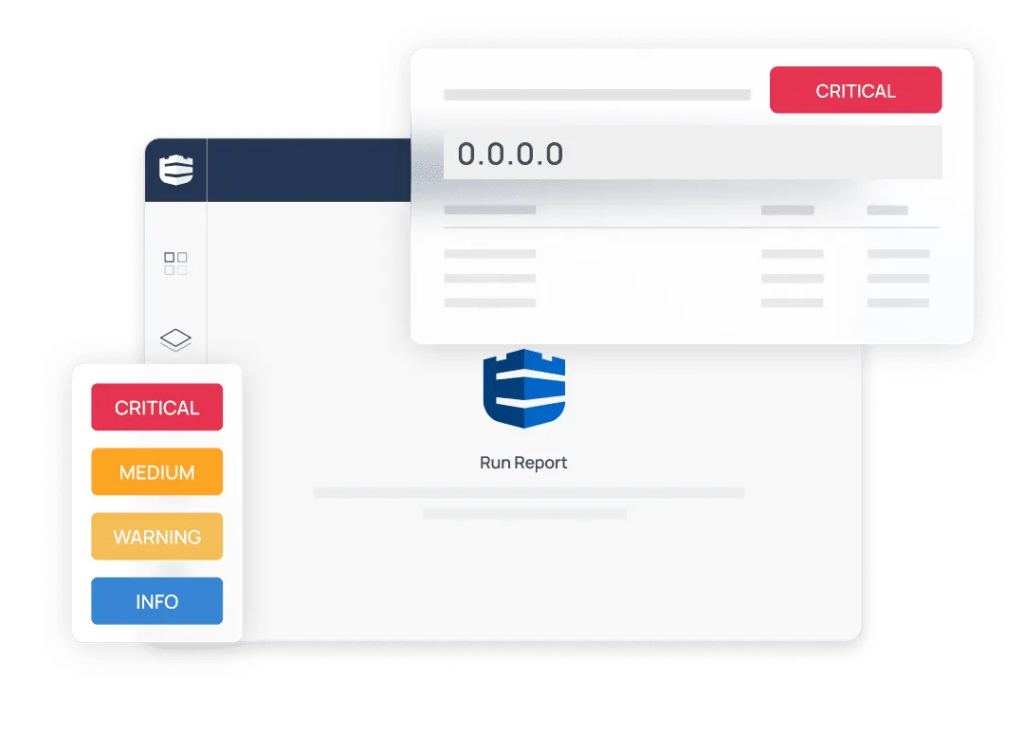
Our platform includes automated vulnerability scanning tools that continuously monitor your systems and applications for known vulnerabilities. These scans cover both internal and external assets, providing a holistic view of your security posture.
Prioritized Remediation Guidance
Our vulnerability scanners not only identify vulnerabilities but also prioritize them based on severity and provide actionable remediation guidance. This helps you focus on the most critical risks and take immediate steps to address them.
Integration with Patch Management
Defendify integrates with patch management systems, facilitating the automated deployment of patches to remediate identified vulnerabilities. This streamlines the patching process and reduces the risk of human error.
Penetration Testing
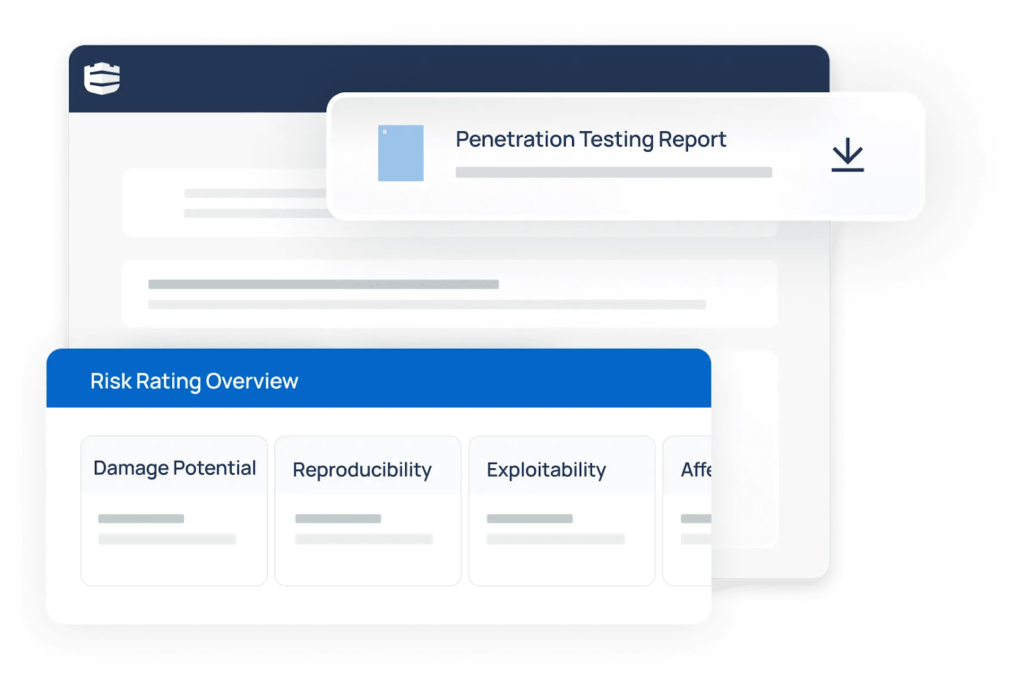
Defendify offers penetration testing services conducted by experienced security professionals. These tests simulate real-world attacks to identify vulnerabilities that automated scans might miss, providing a deeper understanding of your security posture.
Expert Support
Our team of cybersecurity experts provides ongoing support and guidance to help you implement and manage your vulnerability management program effectively.
Key advantages of Defendify’s approach:
- Proactive and continuous: Continuous scanning and monitoring help you stay ahead of threats.
- Prioritized and actionable: Prioritized vulnerability reports and remediation guidance facilitate efficient risk mitigation.
- Integrated and automated: Integration with patch management streamlines remediation efforts.
- Holistic and comprehensive: A complete suite of cybersecurity solutions complements vulnerability management.
- Expert-led: Guidance and support from experienced cybersecurity professionals.
By combining advanced technology with expert guidance, Defendify empowers businesses to effectively manage vulnerabilities, strengthen their security posture, and protect critical IT assets.
Defendify – Your Ideal Vulnerability Management Solution
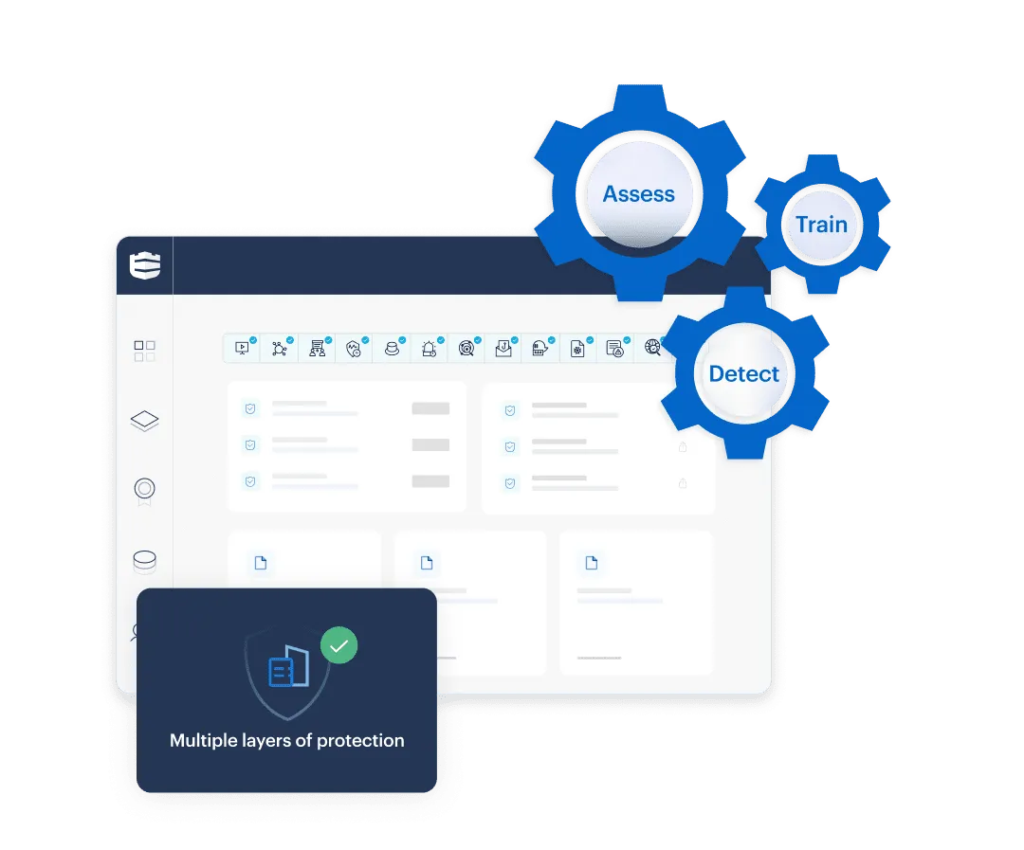
Cybersecurity is not a set-it-and-forget-it endeavor. New threats emerge daily, and vulnerabilities can lurk in unexpected places. Defendify provides the tools and expertise you need to proactively manage vulnerabilities and strengthen your defenses.
Here’s how Defendify can help:
- Continuous vulnerability scanning. Identify weaknesses in your systems and applications before attackers do.
- Prioritized remediation guidance. Focus on the most critical risks and take immediate action.
- Automated patch management. Streamline patching and reduce the risk of human error.
- Penetration testing. Uncover hidden vulnerabilities and assess the effectiveness of your security controls.
- Comprehensive cybersecurity solutions. Get complete protection with a holistic suite of security tools and expert support.
Don’t leave your business vulnerable to cyberattacks. Partner with Defendify and build a strong security foundation today.
FAQs
What is Risk-Based Vulnerability Management?
Risk-based vulnerability management (RBVM) is a strategic approach to cybersecurity that goes beyond simply identifying and patching every vulnerability. It prioritizes remediation efforts based on the risk each vulnerability poses to your organization.
Think of it like this: you wouldn’t treat a small cut on your finger with the same urgency as a major head injury. Similarly, RBVM helps you focus your resources on the most critical vulnerabilities that could have the biggest impact on your business.
Where Can the Vulnerabilities Be Found?
Vulnerabilities can lurk in various corners of your IT environment, both within your internal network and your external-facing assets. To effectively identify and address these weaknesses, you need a multi-faceted approach to vulnerability scanning.
External Vulnerability Scans
These scans target your public-facing assets, simulating attacks from outside your network. They focus on identifying vulnerabilities in:
- Firewalls: Weaknesses in your firewall configuration can allow unauthorized access to your network.
- Servers: Vulnerable servers can be exploited to gain control of critical systems and data.
- Web applications: Flaws in web applications can expose sensitive data or allow attackers to inject malicious code.
Internal Vulnerability Scans
These scans originate from inside your network, providing a deeper look into your internal systems and applications. They can uncover vulnerabilities in:
- Workstations and laptops: Employee devices can be entry points for malware and other threats.
- Internal servers and databases: Vulnerabilities in these systems can lead to data breaches and operational disruptions.
- Network devices: Weaknesses in routers, switches, and other network devices can compromise network security.
- Software and applications: Outdated or misconfigured software can be exploited by attackers.
- IoT devices: Internet-connected devices like printers, security cameras, and even smart appliances can pose security risks if not properly secured.
Once a vulnerability scan is complete, it’s crucial to prioritize and remediate the findings. Focus on addressing critical risks first, followed by medium and low-risk vulnerabilities.
Automated vulnerability scanning tools can streamline this process by:
- Identifying vulnerabilities: Pinpointing weaknesses in your systems and applications.
- Providing detailed reports: Generating reports that prioritize vulnerabilities based on severity.
- Offering remediation guidance: Suggesting steps to fix the identified vulnerabilities.
- Integrating with patching tools: Facilitating automated patching of known vulnerabilities.
How Do You Handle a Known Vulnerability?
Finding a known vulnerability allows you to take positive, next steps to increase your cybersecurity. Here’s what you can do with the data from a vulnerability scan:
- Use it to institute a remediation plan or management planning program document.
- Apply patches in a reasonable amount of time.
- Implement a plan for dealing with legacy systems, for example, an end-of-life server or operating platform
- Document any ongoing, accepted risks to prioritize vulnerability management and protect your network.
Resources & insights
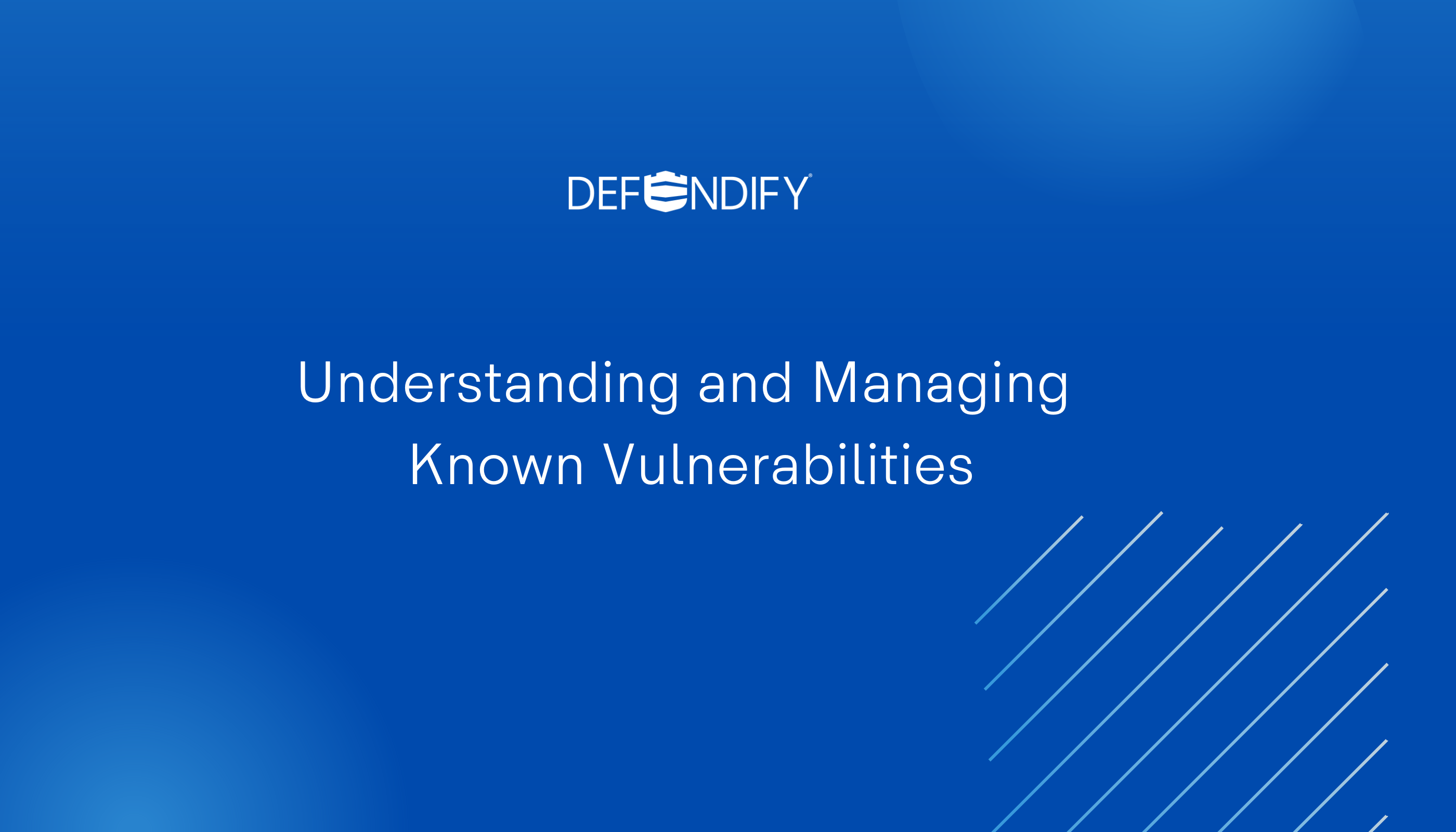
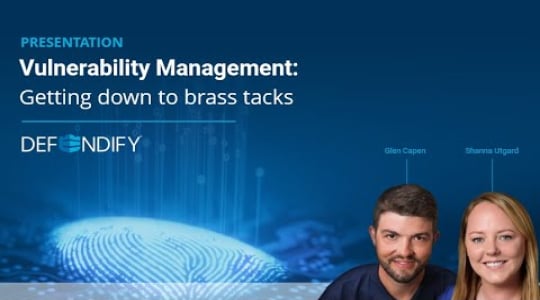
Vulnerability Management: Getting down to brass tacks
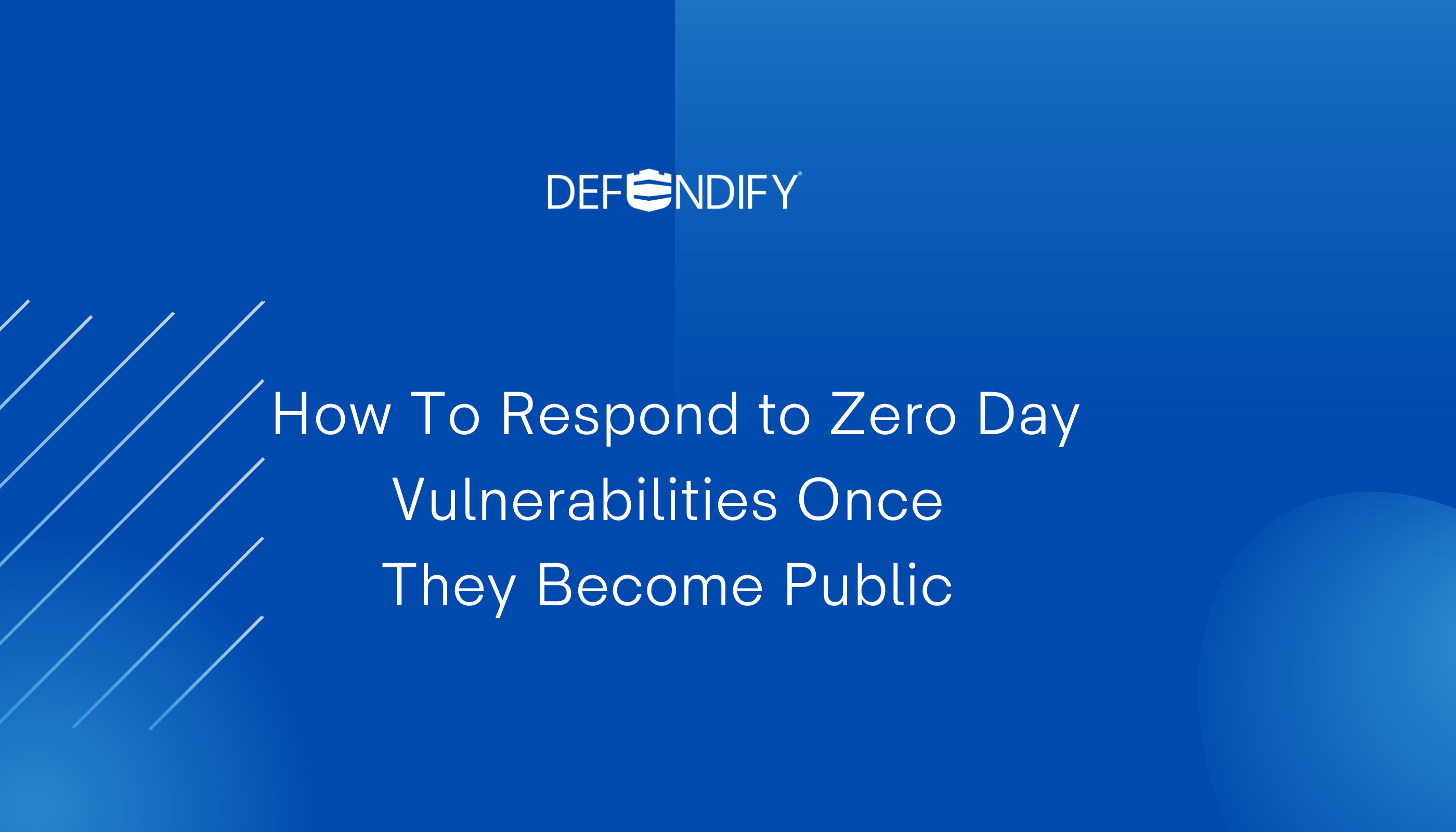


Vulnerability Management: Getting down to brass tacks

Protect and defend with multiple layers of cybersecurity
Defend your business with All-In-One Cybersecurity®.
Explore layered
security
Learn more about Defendify’s three key layers and All-In-One Cybersecurity®.
How can we help?
Schedule time to talk to a cybersecurity expert to discuss your needs.
See how it works
See how Defendify’s platform, modules, and expertise work to improve security posture.
